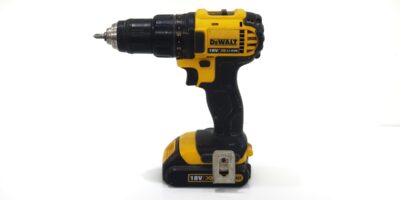Deck Installation
Installing a deck can transform your outdoor space into a functional and aesthetic extension of your home. Getting started with deck installation requires a clear plan, the right materials, and some basic carpentry skills.
Planning Your Deck
Before purchasing materials or breaking ground, it’s essential to have a detailed plan. Begin by measuring the area where you intend to build your deck. Consider how you will use the deck and what size will best suit your needs. Sketch a layout on paper or use a deck design software for precision.
Check local building codes and obtain any required permits. These regulations vary by location and might influence your design choices. Think through how the deck will attach to your house, and decide if you will need stairs, handrails, or non-standard design elements.
Choosing Materials
The materials you choose for your deck determine its durability and aesthetic appeal. Pressure-treated lumber is a common choice due to its resilience against the elements and pests. Alternatively, consider cedar or redwood for their natural resistance to decay and insects, plus they offer a striking appearance.
Composite decking materials are gaining popularity due to their low maintenance requirements. Made from a blend of wood fibers and plastic, they resist rot and fading but come at a higher cost. Ensure your decking materials are rated for outdoor use and are suitable for the climate in your area.
Gathering Tools and Supplies
- Measuring tape
- Level
- Saw (circular or miter)
- Drill
- Hammer
- Screws and nails
- Post hole digger
- Concrete (for footings)
- Protective gear (gloves, safety glasses)
Having the right tools on hand will streamline the installation process. Double-check your supplies against your list to avoid any interruptions once you start building.
Preparing the Site
Clear the area of any grass, rocks, or debris. Mark the corners of the deck with stakes and string to outline the perimeter. Ensure the area is level by grading the site if necessary. If the ground is uneven, you may need to level the area or adjust your deck design to accommodate.
Installing Footings
Footings are critical to the stability of your deck. Dig holes at each marked location for the deck posts, ensuring they are below the frost line to prevent shifting. Pour concrete into the holes, insert post anchors, and allow to cure. Space the footings according to your deck plans, typically 6-8 feet apart.
Building the Frame
Begin framing by attaching a ledger board to the house. This board supports one end of the deck joists and must be securely fastened. Use lag screws or bolts to attach the ledger, ensuring it’s level and properly sealed to prevent water infiltration.
Next, install the beam that will support the other end of the deck joists. Attach the posts to the footings, and then secure the beam to the posts using metal brackets. Place the joists on edge across the beam and ledger board, securing them with joist hangers or by nailing them in place.
Laying the Decking
Once the frame is complete, start laying the decking boards perpendicular to the joists. Leave a small gap between each board for drainage and expansion. Attach the boards using screws or hidden fasteners for a clean look. Be sure to cut the boards to fit around any obstructions or design elements.
Trim any overhanging boards to the desired length and sand rough edges. Consider applying a stain or sealant to the wood to protect it from the elements and extend its lifespan.
Installing Railings and Stairs
If your deck is elevated, railings provide necessary safety and add aesthetic value. Follow local building codes for height and spacing requirements. Attach the posts first, then install the top and bottom rails. Secure the balusters between the rails at evenly spaced intervals.
For stairs, use stringers to form the sides and provide support. Attach treads and risers to the stringers, ensuring they are level and secure. Install a handrail for added safety.
Final Touches
With the main structure in place, add any finishing touches like built-in seating, planters, or outdoor lighting. These elements can personalize your deck and enhance its usability. Conduct a final inspection to ensure all components are secure and meet safety standards.
Regular maintenance will keep your deck looking great for years. Clean it periodically, check for loose connections, and reapply sealant as needed to protect the wood.
“`

Subscribe for Updates
Get the latest articles delivered to your inbox.
We respect your privacy. Unsubscribe anytime.